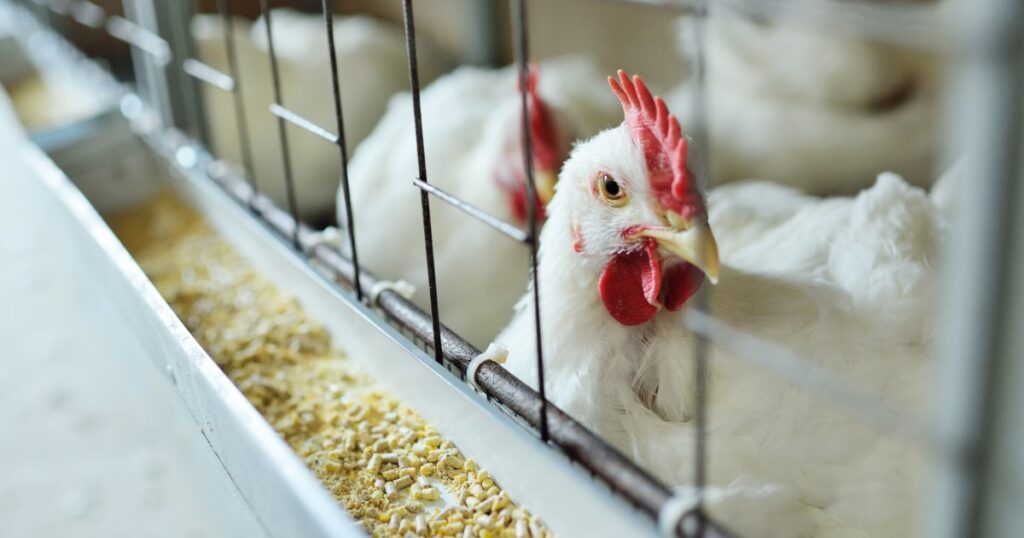Another person has tested positive for avian influenza, aka bird flu, amid an ongoing global outbreak among wild birds, which has spread to poultry and other animals.
In the United States, a highly contagious strain of avian influenza A (H5N1) has been confirmed in cattle in nine states as well as a dairy worker in Texas, who tested positive for H5N1 in March.
It’s the first time this strain of H5N1 — referred to as highly pathogenic avian influenza A (HPAI) — has been detected in cows and the first instance of cow-to-human transmission, according to the U.S. Centers for Disease Control and Prevention.
Bird flu is a disease caused by infection with avian influenza A viruses, which occur naturally among wild aquatic birds and circulate among poultry, TODAY.com previously reported.
“The current bird flu strain that we’re concerned with, H5N1, has been circulating around the world for quite some time,” Dr. William Schaffner, professor of infectious diseases at Vanderbilt University Medical Center, previously told TODAY.com.
Bird flu in Australia
Australia reported its first ever human case of H5N1 on Tuesday in a child who became infected while traveling in India in March, according to the Victorian Department of Health. The child developed a “severe infection” but has since made a full recovery.
The recent human case in Australia was also caused by a highly pathogenic strain of H5N1, but not the same one causing the outbreak in the U.S., Victorian authorities said.
No known human-to-human spread has occurred with the current H5N1 strains, per the CDC. The risk to the general public is low, but the outbreak has sounded the alarm among health officials in the U.S. and abroad, who are monitoring bird flu viruses closely.
Bird flu transmitted to humans
Occasionally, bird flu viruses spread to mammals, and rarely, to humans.
In a recent press conference, the chief scientist of the World Health Organization called the risk of the bird flu spreading to humans “an enormous concern,” and warned about the potential for the virus to acquire the ability to spread more efficiently between people.
The highly pathogenic H5N1 strain causing the U.S. outbreak is severe and often fatal in birds, but appears to be mild in cows. However, traces of the virus have been detected in milk.
What are the symptoms of bird flu?
Bird flu infections in humans can range in severity, experts note. Some people have no symptoms at all or only a mild flu-like illness, while others develop severe disease requiring hospitalization, according to the CDC.
“It can be a serious infection with a high mortality rate,” said Schaffner.
According to the CDC, reported signs and symptoms of bird flu include:
- Fever
- Cough
- Runny nose
- Muscle aches
- Headache
- Fatigue
- Shortness of breath
- Eye redness or inflammation (conjunctivitis)
- Diarrhea
- Nausea
- Vomiting
Bird flu in humans may look similar to seasonal influenza flu or upper respiratory infection. In severe cases, bird flu can lead to pneumonia, respiratory failure and other complications, TODAY.com previously reported.
The recent case of H5N1 in the child in Australia was a severe infection, but the child fully recovered. Victorian health officials did not release additional details about the patient’s symptoms.
The dairy worker in Texas who tested positive for H5N1 in March had a mild infection, with eye redness or conjunctivitis (pink eye) as the only symptom, the CDC said. The patient was treated with flu antivirals and recovered.
The only other human case of H5N1 in the U.S., which was reported in Colorado in 2022. was a mild infection as well.
An infection with bird flu viruses cannot be diagnosed by signs or symptoms alone, the CDC says. Laboratory testing is required.
How does bird flu spread to humans?
Transmission of bird flu viruses to humans is very rare. According to the WHO, since 2003 there have been 889 cases and 463 deaths caused by H5N1 in 23 countries.
Avian influenza can spread from infected birds to humans in a few ways, per the CDC:
- Directly from an infected bird
- From environments contaminated with bird flu viruses
- Through an intermediate host, such as another animal
Infected birds can shed the virus in their saliva, nasal secretions, mucus and feces, TODAY.com previously reported. People can become infected when the virus particles get into the mouth, nose, eyes or are inhaled, says Schaffner.
Humans typically become infected with bird flu viruses through close, unprotected contact with an infected bird.
Human-to-human transmission of bird flu viruses is extremely rare. The few cases that have been documented have occurred primarily through prolonged, unprotected contact between a symptomatic person and a family member or caregiver, per the CDC.
“The virus doesn’t have the (genetic) capacity to spread easily from person to person,” says Schaffner. However, scientists are closely monitoring bird flu viruses for any changes.
Preventing bird flu
There is no evidence that humans can get bird flu from chicken, eggs, or beef that’s been properly prepared and cooked, and it is safe to drink pasteurized milk, experts say.
The risk of getting bird flu is low, but the CDC recommends people:
- Avoid direct contact with wild birds
- Avoid visiting poultry farms
- When in contact with poultry, wear a mask and eye protection
- Wash hands after any contact with poultry
- Visit a doctor if you become sick after contact with birds
Read the full article here









